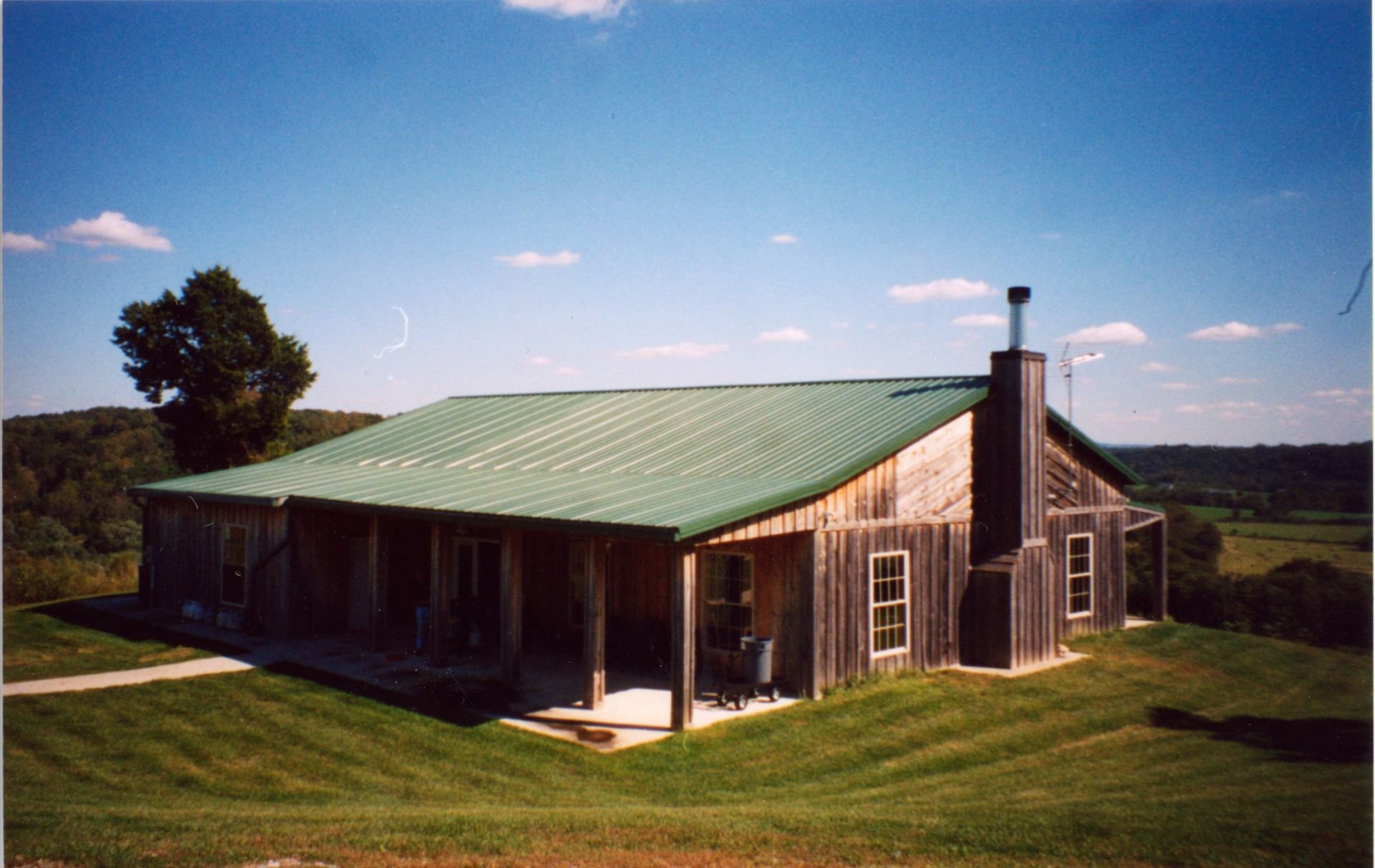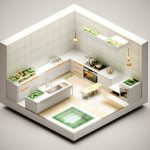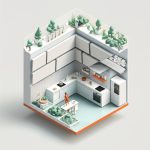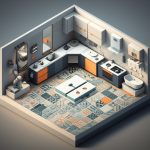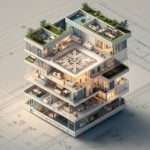[Are Metal Building Homes Cheaper Than Traditional Homes?] In the realm of home construction, the question of cost-effectiveness often arises. Metal building homes have emerged as a compelling option, but their affordability compared to traditional homes is a subject of considerable interest. In this article, we delve into this intriguing topic, exploring the factors that influence the price of metal building homes and comparing them to their traditional counterparts to provide a comprehensive understanding of their financial implications.
Key Takeaways:
- Metal building homes are significantly cheaper than traditional homes, with average construction costs ranging from $35 to $60 per square foot.
- Metal buildings are more affordable than wood, with the shell of a wood structure costing roughly double that of a metal building.
- Larger metal homes have higher total costs but lower per-square-foot expenses.
- Metal building homes can be constructed more quickly than traditional homes, and their resale value is anticipated to rise in the future.
Are Metal Building Homes Cheaper?
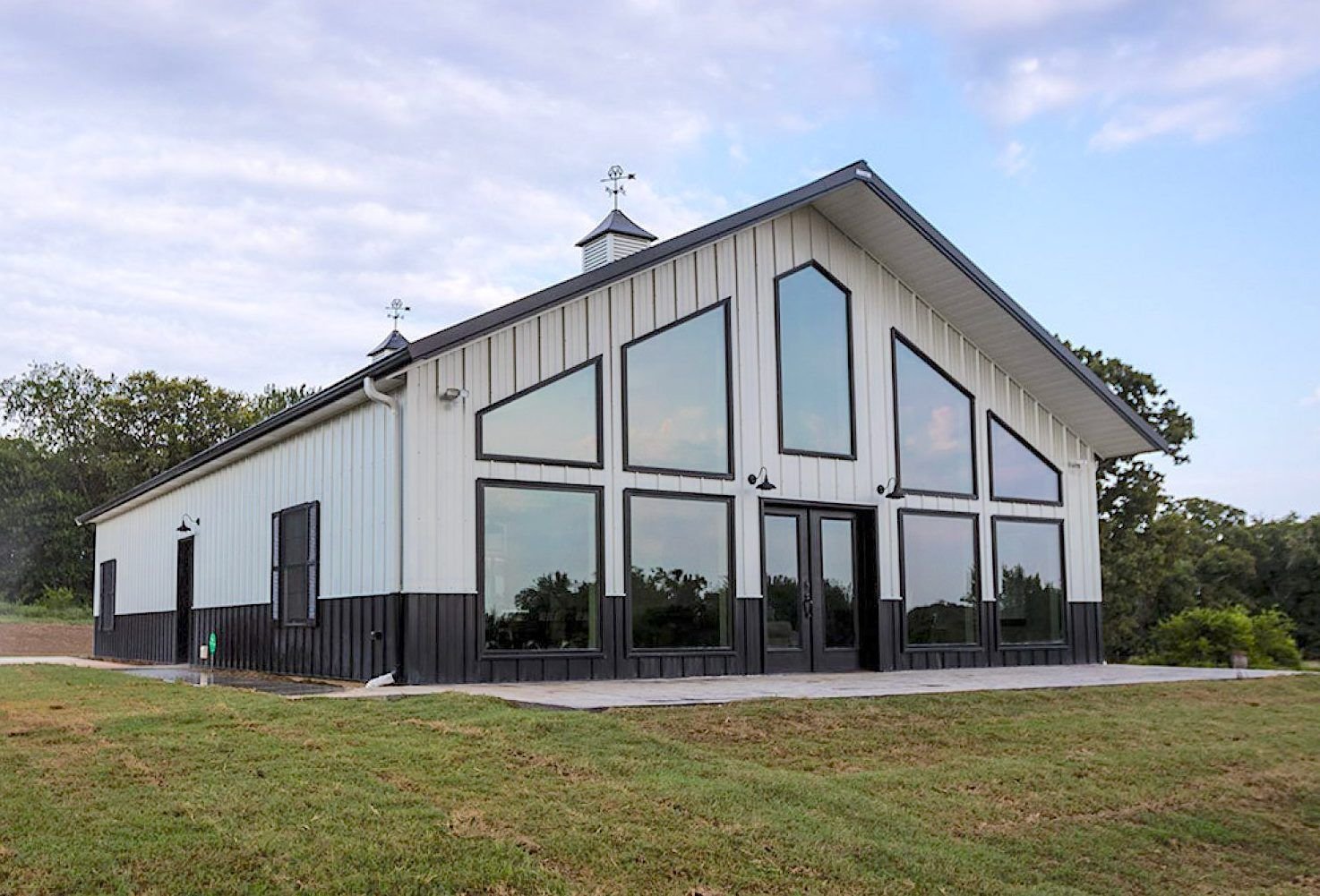
Metal buildings made for housing commonly cost less than conventional dwellings. Costs by square foot range from $35 to $60 versus $150 for traditional homes.
Key Factors Affecting Cost:
- Size: Larger homes cost more, but the price per square foot decreases.
- Location: Material availability and labor costs differ regionally.
- Design: Complex designs or custom features can increase cost.
- Construction Speed: Metal buildings can be built faster than traditional houses, potentially saving on labor expenses.
Table: Cost Comparison
| Building Type | Cost per Square Foot |
|---|---|
| Metal Building | $35-$60 |
| Wood-Framed Home | $100-$150 |
| Brick Home | $120-$180 |
Advantages of Metal Building Homes:
- Lower Construction Costs: Prefabricated metal components and simplified construction methods save time and labor.
- Durability: Metal is resistant to rot, insects, and fire.
- Energy Efficiency: Metal panels provide excellent insulation, reducing heating and cooling costs.
- Fast Construction: The pre-engineered nature of metal buildings allows for speedy construction.
Disadvantages of Metal Building Homes:
- Limited Architectural Flexibility: Metal buildings may have less architectural variety than traditional homes.
- Potential for Condensation: Condensation can occur inside metal buildings if proper ventilation is not installed.
- Higher Insurance Costs: Some insurance companies view metal buildings as more susceptible to damage, resulting in higher premiums.
Is a Metal Building Home Right for You?
Consider these factors when deciding if a metal building home is right for you:
- Budget: Metal building homes can be a more affordable option than traditional houses.
- Lifestyle: Metal homes are well-suited for those seeking durability, energy efficiency, and fast construction.
- Location: Check local building codes and zoning regulations to ensure metal buildings are permitted in your area.
Stay protected in extreme weather conditions and learn more about the safety of modular homes in storms: are modular homes safe in storms.
Create a nutritious and balanced homemade diet for your furry friend with the help of our balanced homemade dog food calculator.
Elevate your culinary skills and discover the secret to making the perfect homemade pizza in a convection oven: baking homemade pizza in convection oven.
Cost-saving advantages of metal materials
There are plenty of advantages to using metal materials in your home. They are inexpensive and environmentally friendly, and you can save money on construction and maintenance. For instance, they reduce energy consumption. Metal roofs reflect sunlight, which helps to keep your home cooler in the summer, resulting in lower energy bills.
Metal siding and roofing are also less likely to require repairs than traditional materials. That’s because they are resistant to rot, insects, and moisture. In addition, metal is a durable material that will last for many years with minimal maintenance. This can save you a lot of money in the long run.
Key Takeaways:
- Metal building homes are typically cheaper than traditional homes, costing $35-$60 per square foot compared to $150.
- Metal building homes are durable and require less maintenance than traditional homes, saving you money in the long run.
- Metal building homes are energy-efficient, helping you to save money on your energy bills.
Relevant URL Sources:
Potential cost drawbacks to consider
While metal building homes may be cost-effective in the long run, there are some potential cost drawbacks to consider:
-
Size and Complexity: Larger and more complex metal building homes will require more materials and labor, leading to higher construction costs.
-
Location: Building in remote or rural areas with limited access to materials and labor can increase transportation and labor costs.
-
Features and Finishes: Adding additional features like insulation, drywall, windows, and doors will add to the overall cost.
-
Customization: Extensive customization and personalized design elements can significantly increase the cost of a metal building home.
Key Takeaways:
-
Construction costs: Metal building homes typically have lower construction costs than traditional homes.
-
Variable costs: The size, complexity, location, features, and customization of a metal building home can affect its cost.
-
Long-term savings: While metal building homes may have higher upfront costs than traditional homes, they often offer long-term savings on maintenance and energy consumption.
Relevant URL Sources:
- Pros and Cons of Metal Building Homes
- Understanding the Cost of Metal Building Homes
Long-term cost-effectiveness and value assessment
Assessing the cost-effectiveness and value of metal building homes over the long term requires a nuanced analysis that goes beyond the initial construction costs.
Durability and resilience: Unlike traditional homes, metal structures are inherently resistant to fire, rot, and termites, significantly reducing maintenance costs and the risk of costly repairs over time. Their durability also means that they can withstand extreme weather events, potentially saving on insurance premiums.
Energy efficiency: Metal buildings can be highly energy-efficient, thanks to proper insulation and reflective coatings. This can lead to substantial savings on utility bills over the long run.
Resale value: While the resale value of metal homes may not be as high as that of traditional homes in some markets, their durability and low maintenance costs can make them a sound investment in the long run.
Key Takeaways:
- Metal buildings offer long-term cost-effectiveness due to their durability and low maintenance requirements.
- Energy efficiency can lead to significant savings on utility bills over time.
- Durability and resilience can reduce insurance premiums and the risk of costly repairs.
Relevant URL Sources:
- The Pros and Cons of Metal Building Homes
- Steel Homes vs. Traditional Houses: A Value Comparison
FAQ
Q1: Are metal building homes cheaper than traditional homes?
A1: Yes, metal building homes are generally cheaper than traditional homes. On average, they cost between $35 and $60 per square foot to build, compared to $150 per square foot for traditional homes.
Q2: Why are metal building homes cheaper than traditional homes?
A2: Metal building homes are cheaper because they are made from less expensive materials, such as steel, and require less labor to construct. Steel is also stronger than wood, so it can be used to create larger structures with fewer supports.
Q3: Are there any drawbacks to building a metal building home?
A3: One potential drawback of metal building homes is that they can be noisy, as steel conducts sound easily. They may also have limited design options compared to traditional homes.
Q4: Are metal building homes durable?
A4: Yes, metal building homes are very durable. Steel is resistant to fire, termites, rot, and extreme weather conditions.
Q5: Can metal building homes be customized?
A5: Yes, metal building homes can be customized to meet your specific needs. You can choose from a variety of colors, styles, and finishes to create a home that is unique to you.
Are Metal Building Homes Cheaper: Uncovering the Cost-Effectiveness Truth
Are Metal Building Homes Cheaper: Uncovering the Cost-Effectiveness Truth
Key Takeaways:
- Metal building homes are typically more affordable to construct than traditional stick-built homes, providing potential savings of up to 25%.
- The average cost of a metal home ranges from $74,000 to $240,000, with an average cost of $157,000.
- Metal building costs vary based on factors such as size, complexity, and design, typically ranging from $20 to $40 per square foot.
Are Metal Building Homes Cheaper? Unveiling the Cost-Effectiveness Truth
Metal building homes have emerged as a potential game-changer in the housing industry, captivating the attention of many seeking cost-effective shelter. But the question remains: are metal building homes cheaper** than traditional dwellings? Let’s dive into the facts and uncover the truth.
Unveiling the Cost Savings
Compared to stick-built homes, metal homes typically offer savings ranging from 10% to 25%. This significant cost advantage stems from several factors:
-
Lower Material Costs: Metal buildings utilize prefabricated steel components, which are often less expensive than lumber and other materials used in traditional construction.
-
Simplified Construction: The modular nature of metal buildings allows for faster and easier assembly, reducing labor costs compared to stick-built homes.
Exploring the Cost Breakdown
The average cost of a metal home ranges from $74,000 to $240,000, with prices varying based on factors such as size, complexity, and design. On a per-square-foot basis, metal building prices generally fall between $20 and $40.
Comparing to Traditional Homes
To put these costs in perspective, the average cost of building a traditional stick-built home in the United States is around $275,000. This means that metal homes can potentially save you thousands of dollars, making them an attractive option for cost-conscious homeowners.
Additional Considerations
While metal building homes offer significant cost savings, it’s crucial to consider other factors that may impact your overall expenses:
-
Site Preparation: Land preparation and foundation costs can vary depending on your location and terrain.
-
Customization: Metal homes can be customized to suit your needs and preferences, but these additions may increase your total cost.
-
Maintenance: Metal homes require less maintenance than traditional homes, but regular inspections and minor repairs are still necessary.
Ultimately, the question of are metal building homes cheaper depends on your specific needs and circumstances. While they offer potential cost savings, it’s essential to weigh all factors carefully to determine if this housing option is the right choice for you.
If you are wondering about the safety of modular homes during storms, be sure to check out are modular homes safe in storms.
Are you looking for a way to make healthy and balanced homemade dog food? Check out our balanced homemade dog food calculator.
Want to know the best way to bake a homemade pizza in a convection oven? We have a guide that will help you out: baking homemade pizza in a convection oven.
Energy Efficiency Considerations
Navigating the realm of energy efficiency is paramount when considering metal building homes. Their inherent insulation properties and ability to reduce thermal bridging promise significant energy savings.
- Reduced Global Energy Consumption: Opting for steel buildings contributes to minimizing global energy consumption in construction.
- Inherent Insulation: Metal buildings naturally insulate, reducing the need for additional insulation materials and lowering energy costs.
- Thermal Bridging Mitigation: Metal’s low conductivity helps curb thermal bridging, where heat escapes through building components, further enhancing energy efficiency.
Key Takeaways:
- Metal buildings boast high energy efficiency due to their inherent insulation properties and ability to reduce thermal bridging.
- Investing in metal building homes can lead to substantial energy savings over their lifespan.
- Energy efficiency in buildings contributes to environmental protection and reduces global energy consumption.
Relevant URL Sources:
Customization Options and Costs
The flexibility of metal building homes is one of their key strengths. These structures can be highly customized to meet your needs, allowing you to create a home that is unique to you.
Key Takeaways:
- Metal building homes offer extensive Customization Options and Costs, allowing you to tailor your home to your preferences.
- You can choose from a variety of materials, styles, and layouts to create a home that reflects your taste and lifestyle.
- The cost of a metal building home typically ranges from $50 to $65 per square foot, significantly lower than traditional homes that cost $100 to $150 per square foot.
Customization Options
The materials used in metal building homes are highly customizable. You can choose from a variety of metals, including steel, aluminum, and zinc. Each metal has its own unique properties, so you can select the one that best meets your needs.
In addition to the materials, you can also customize the style of your metal building home. You can choose from a variety of architectural styles, including traditional, contemporary, and modern. You can also add your own personal touches, such as a porch, deck, or garage.
Costs
The cost of a metal building home will vary depending on the size, style, and materials used. However, metal building homes are typically more affordable than traditional homes. This is because metal is a less expensive material than wood or brick. In addition, metal building homes are easier to assemble, which can save on labor costs.
Conclusion
Metal building homes offer a number of advantages over traditional homes, including affordability, durability, and energy efficiency. If you are looking for a home that is unique and affordable, a metal building home may be the right choice for you.
Citations:
- Metal Building Homes Buying Guide: Kits, Plans, Cost, Insurance
- How Much Do Metal Building Homes Cost? (2024 Prices)
Potential Resale Value of Metal Building Homes
When considering metal building homes, the potential resale value becomes a significant factor. These homes are gaining popularity, which positively impacts their value.
Pros and Cons
Pros:
- Durability and longevity: Metal homes withstand harsh weather, reducing repair costs and increasing desirability.
- Low maintenance: Steel cladding requires minimal upkeep, saving homeowners time and money.
Cons:
- Perception: Some buyers may prefer traditional homes, potentially affecting resale value.
- Noise transfer: Metal can transmit sound, which may be a concern for some buyers.
Additional Considerations:
- Location: Resale value depends on the area’s demand for metal homes.
- Customization: Unique or customized features can enhance value.
- Builder reputation: A reputable builder builds homes that meet industry standards, increasing resale value.
Key Takeaways:
- Metal building homes offer potential for value appreciation due to durability and low maintenance.
- Location and builder reputation influence resale value.
- Customization can enhance value but may also affect marketability.
Sources:
– Advantages and Disadvantages of Metal Building Homes
– Metal Building Homes Pros and Cons
FAQ
Q1: Are metal building homes cheaper than traditional homes?
A1: Yes, metal building homes typically cost less to construct compared to traditional stick-built homes. The cost savings can range from 20% to 25%.
Q2: What factors influence the cost of a metal building home?
A2: The size, complexity, and design of the home, as well as the geographic location and local labor costs, can all affect the cost of a metal building home.
Q3: Are metal building homes durable and long-lasting?
A3: Yes, metal building homes are highly durable and can withstand extreme weather conditions. They are also resistant to fire, pests, and rot.
Q4: Are metal building homes energy-efficient?
A4: Yes, metal building homes can be highly energy-efficient. The steel framing and insulation contribute to reduced energy consumption.
Q5: Are there any disadvantages to metal building homes?
A5: One potential disadvantage of metal building homes is noise transmission. Steel is a good conductor of sound, so it’s important to consider soundproofing measures. Additionally, metal building homes may have fewer design options compared to traditional homes.
Are Metal Building Homes Cheaper: A Comprehensive Analysis
In the realm of home construction, the question of cost-effectiveness lingers at the forefront of every homeowner’s mind. Among the myriad of building options available, metal building homes have emerged as a viable choice, sparking the inquiry: “Are Metal Building Homes Cheaper: A Comprehensive Analysis?” Join us as we delve into the intricacies of metal building costs, exploring the factors that influence their affordability and providing invaluable insights for discerning homeowners seeking a cost-conscious abode.
Key Takeaways:
- Metal building homes are generally less expensive to construct than traditional homes.
- The typical cost of a metal home is around $157,000.
- Metal homes offer cost savings due to:
- Lower labor and material costs
- Reduced maintenance expenses
- Improved energy efficiency
- The cost of metal building homes can vary based on factors such as size, complexity, location, and availability of materials and labor.
Are Metal Building Homes Cheaper?
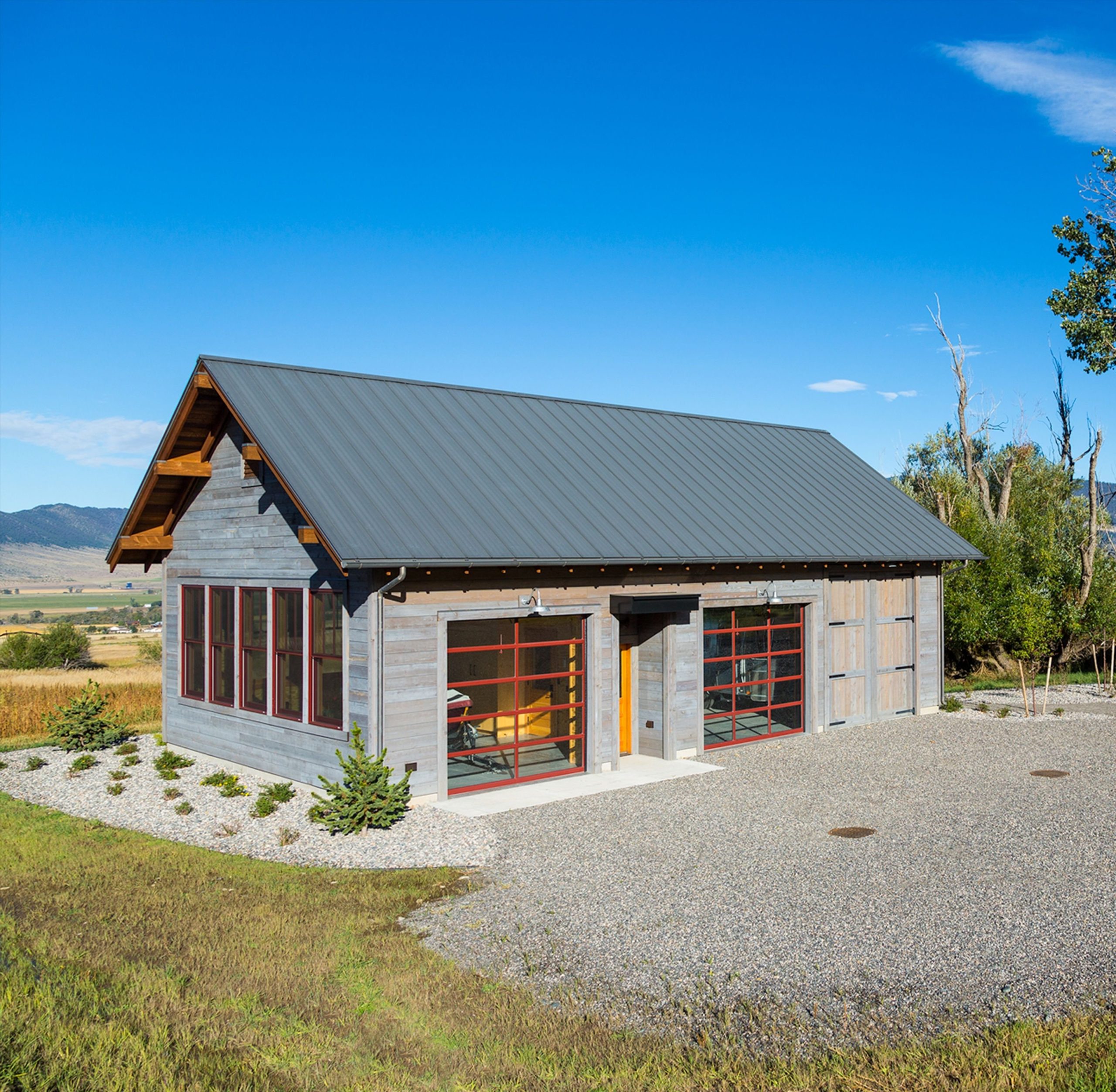
So, are metal building homes cheaper than traditional stick-built homes? Let’s break it down.
Cost-Effectiveness
Metal homes can be a more cost-effective option due to:
- Lower construction costs: Metal buildings require less labor and materials, reducing overall expenses.
- Reduced maintenance: Metal is durable and weather-resistant, minimizing ongoing upkeep costs.
- Energy efficiency: Metal homes can be well-insulated, lowering heating and cooling bills.
Average Cost of Metal Homes
On average, a metal home costs around $157,000. However, this can vary based on factors like:
- Size
- Design complexity
- Project location
- Material availability
Variation in Prices
Are metal building homes cheaper than stick-built homes in all cases? Not necessarily. Prices can fluctuate depending on:
- Building size: Larger metal homes cost more.
- Design: Intricate designs increase building costs.
- Project location: Costs can vary based on local labor and material availability.
Pros and Cons of Metal Homes
Pros:
- Cost-effective construction
- Reduced maintenance
- Energy efficiency
- Durability
Cons:
- Design limitations
- Potential noise issues
- Rust susceptibility (in certain environments)
Conclusion
Are metal building homes cheaper? Yes, they can be, but it depends on several factors. If you prioritize cost-effectiveness and durability, metal homes can be an excellent choice. However, consider your specific needs and budget before making a decision.
-
Are you concerned about the safety of modular homes in storms? are modular homes safe in storms to learn more.
-
Concerned about your dog’s diet? Try our balanced homemade dog food calculator to create a custom meal plan.
-
Craving homemade pizza? Discover the secrets of baking homemade pizza in a convection oven for a crispy, perfect crust every time.
Customization and Design Flexibility Factors
Picture this: You’re designing your dream home, and you’re not constrained by traditional building materials like brick or wood. Metal building homes offer a world of possibilities when it comes to customization and design flexibility. Let’s explore what makes them so special.
Unleashing Your Imagination
With metal building homes, the sky’s the limit when it comes to shaping your living space. The versatility of metal allows for unique and intricate designs, from towering ceilings to curved walls. You can incorporate glass facades for breathtaking views, or add decorative accents to create a truly personalized aesthetic.
Flexibility to Match Your Lifestyle
Metal building homes can be tailored to suit your changing needs. Whether you need extra bedrooms for a growing family or a dedicated home office, the modular construction method makes it easy to expand or reconfigure your living space.
Room-by-Room Customization
Inside your metal building home, every room can be a reflection of your personal style. From custom cabinetry to lighting fixtures, you have complete control over the design and functionality of each space. The open floor plan concept allows for seamless transitions between areas, creating a sense of flow and connectivity.
Endless Color Options
Metal panels come in a wide range of colors and finishes, allowing you to create the perfect exterior for your home. Choose from vibrant hues to subtle earth tones, or mix and match colors for a truly striking look.
Key Takeaways:
- Unleash your creativity: Design unique and intricate structures with metal’s versatility.
- Adapt to your changing needs: Easily expand or reconfigure your living space with modular construction.
- Personalize every room: Express your style with custom cabinetry, fixtures, and décor.
- Create your dream exterior: Choose from a vast array of colors and finishes for your metal panels.
Citations:
Material and Labor Market Fluctuations: Impacts on Metal Building Home Costs
Key Takeaways:
- Material and Labor Market Fluctuations: Past two years saw significant rises in costs.
- Impact on Construction Costs: Transportation and labor expenses can drive up building costs.
- Risk Management Strategies: Contractual clauses can help manage risk due to market fluctuations.
- Specific Impacts on Metal Buildings: Steel prices significantly affect metal building costs.
Impact of Material and Labor Market Fluctuations
Surging construction material prices, particularly since early 2021, have had a major impact on the construction industry, including metal building homes. Factors such as fuel prices, labor costs, and logistical challenges significantly influence transportation costs and, consequently, material costs.
Role of Contractual Provisions
In the face of market fluctuations, contractual provisions play a crucial role in risk management. Clear allocation of risk and responsibility between parties can help mitigate the financial impact of cost increases.
Specific Impacts on Metal Buildings
Metal building prices are heavily influenced by steel prices, which have experienced volatility in recent years. While residential metal buildings tend to be less expensive than commercial units due to their smaller size and lower complexity, market fluctuations can still impact their costs.
Sources:
Regional Variations Influencing Cost
Key Takeaways:
- Construction costs vary across regions due to varying factors.
- Labor availability, material accessibility, and building codes impact construction pricing.
- Densely populated urban areas tend to incur higher construction costs compared to rural areas.
Building a home involves numerous factors that influence its overall cost. Regional Variations Influencing Cost play a significant role in determining the financial implications of constructing a metal building home. Understanding these variations helps make informed decisions when budgeting for your dream home.
Labor Availability:
The availability of skilled labor directly affects construction costs. Regions with a limited pool of experienced construction workers may experience higher labor costs. Conversely, areas with a surplus of qualified workers can often offer more competitive rates.
Material Accessibility:
The cost of building materials varies depending on their availability in a particular region. Regions with limited access to specific materials, such as steel or specialized components, may incur higher material costs due to transportation and logistics expenses.
Building Codes:
Local building codes and regulations can impact construction costs. Different regions may have varying requirements for materials, structural designs, and safety standards. Complying with these regulations can influence the overall cost of construction.
Example:
Let’s consider two scenarios:
- Densely Populated Urban Area: Higher labor costs, limited material availability, and strict building codes can lead to increased construction expenses.
- Rural Area: Lower labor costs, easier access to materials, and less stringent building codes can result in more affordable construction.
Remember, understanding Regional Variations Influencing Cost empowers you to make informed decisions about your metal building home project. By factoring in these variations, you can estimate construction costs more accurately and plan accordingly.
Citations:
- Navigating Home Building Costs: Regional & Yearly Variations
- Costmodelling – Regional Variations
FAQ
Q1: Are metal building homes cheaper than traditional homes?
A1: Yes, metal building homes are generally less expensive to build than traditional stick-built homes. The average cost of building a metal home is around $157,000, which is significantly lower than the average cost of building a traditional home.
Q2: What are the cost-saving advantages of metal building homes?
A2: Metal building homes offer various cost-saving advantages compared to traditional homes, including lower initial construction costs, reduced maintenance expenses, and energy efficiency. The durable nature of metal buildings minimizes ongoing maintenance costs, and their excellent insulation properties help reduce heating and cooling expenses.
Q3: Is the cost of metal building homes fixed?
A3: No, the cost of a metal building home can vary depending on several factors, such as the size, complexity, and design of the structure. The location of the project, availability of materials, and labor costs can also influence the overall cost.
Q4: What is the average cost of building a metal home?
A4: The average cost of building a metal home is estimated to be around $157,000. However, it is important to note that this cost can vary based on the factors mentioned in the previous question.
Q5: How can I estimate the cost of my metal building home?
A5: To estimate the cost of your metal building home, it is recommended to consult with a contractor or metal building supplier. They can provide you with a more accurate estimate based on the specific details of your project, such as the size, design, and location.
Are Metal Building Homes Cheaper: Exploring Cost-Saving Benefits
Embark on a journey into the realm of cost-saving construction with [Are Metal Building Homes Cheaper: Exploring Cost-Saving Benefits]. Discover the secrets behind metal building homes’ affordability, unlocking a world of financial advantages. From material efficiency to reduced labor costs, delve into the intricacies of metal structures and uncover how they can transform your dream home into a budget-friendly reality.
Key Takeaways:
- Lower Costs: Metal building homes cost significantly less ($35-$60/sqft) compared to traditional homes ($150/sqft).
- Enhanced Durability: Metal homes are resistant to mold, pests, and fire, providing long-term durability.
- Improved Energy Efficiency: Metal’s insulation properties and heat reflectivity reduce energy consumption.
- Faster Construction: Prefabricated metal components enable faster construction, saving time and expenses.
- Minimal Maintenance: Metal homes require minimal maintenance compared to wood homes, reducing expenses.
Are Metal Building Homes Cheaper?
Yes, are metal building homes cheaper than traditional homes? The answer is a resounding yes! Metal building homes offer significant cost savings compared to their conventional counterparts. Here’s why:
- Lower Material Costs: Metal is an affordable building material, and its lightweight nature eliminates the need for expensive foundations.
- Simplified Construction: Metal buildings are prefabricated, making their assembly faster and cheaper than stick-built homes.
- Design Flexibility: Metal homes are highly customizable, allowing for cost-effective design options such as open floor plans and vaulted ceilings.
Table: Cost Comparison between Metal and Traditional Homes
| Home Type | Cost per Square Foot |
|---|---|
| Metal Building | $35-$60 |
| Traditional Home | $150 |
In addition to the direct construction costs, metal building homes offer long-term savings through:
- Durability: Metal is more durable than wood, resisting mold, pests, and fire damage, reducing future repair expenses.
- Energy Efficiency: The insulating properties of metal minimize heat loss, resulting in lower energy bills.
If you’re considering building a new home, are metal building homes cheaper is a question you should definitely explore. With their affordability, durability, and energy efficiency, metal building homes offer a smart and cost-effective investment.
Curious about the resilience of modular homes in severe weather? Check out our expert insights on are modular homes safe in storms, where we explore the construction techniques and safety standards that make them a secure option in turbulent conditions.
If you’re a pet owner looking for a more nutritious and budget-friendly alternative to commercial dog food, our balanced homemade dog food calculator is an invaluable tool. Tailor your dog’s diet to their specific needs and preferences, ensuring they receive the optimal balance of vitamins, minerals, and essential nutrients.
Convection ovens offer exceptional versatility and convenience, and baking a homemade pizza in one is an art form. Our guide on baking homemade pizza in convection oven provides you with step-by-step instructions, expert tips, and delicious variations that will elevate your culinary skills and impress your taste buds.
Reduced Labor Expenses
When it comes to metal building homes, reduced labor expenses are a significant advantage. Unlike traditional homes, prefabricated metal building kits make it a relatively straightforward assembly process.
-
Prefabricated Construction: The pre-engineered components of metal homes eliminate the need for extensive on-site labor. This streamlined approach significantly lowers labor costs.
-
Bolt-Together Framing: The bolt-together framing system allows for fast and efficient assembly. This reduces the number of skilled workers and construction time, leading to further labor savings.
-
Simplified Foundation: Metal homes require minimal foundation work compared to traditional homes, as they are typically built on concrete slabs or piers. This translates to reduced labor requirements for excavation and foundation construction.
Key Takeaways:
- Prefabricated construction eliminates the need for extensive on-site labor.
- Bolt-together framing allows for fast and efficient assembly, reducing skilled labor requirements.
- Minimal foundation work reduces labor expenses for excavation and foundation construction.
Relevant URL Sources:
Simplified Construction Process
The simplified construction process of steel building homes is a major cost advantage. Let me break it down:
- Prefabrication: Metal building components are pre-engineered and manufactured off-site. This precision engineering eliminates the need for complex on-site construction techniques.
- Modular Design: Metal homes are built using standardized modules that can be easily assembled on-site. This modular approach reduces the need for skilled labor and speeds up the construction process.
- Bolt-Together Assembly: Unlike traditional stick-built homes, metal buildings are assembled using simple bolts and connections. This eliminates the mess, time, and labor associated with framing, drywall, and other traditional methods.
Key Takeaways:
- Prefabrication and modular design simplify the construction process.
- Bolt-together assembly eliminates complex framing and drywall work.
- The standardized components and simple assembly methods reduce labor costs.
Relevant URL Sources:
- Prefabricated Steel Buildings: A Guide to Design and Construction
- How to Build a House in 6 Weeks: Metal Building Kit Homes
Long-Term Durability: A Cornerstone of Metal Building Homes
Metal building homes have gained popularity due to their long-term durability. Steel, the primary material in these homes, is renowned for its resilience and ability to withstand harsh weather conditions. Unlike traditional wood-frame homes, metal homes are not susceptible to rot, termites, or fire damage, ensuring structural integrity for decades to come.
Key Takeaways:
- Exceptional Strength: Steel frames provide unparalleled strength, resisting high winds, earthquakes, and snow loads.
- Longevity: Metal’s resistance to decay and corrosion extends the lifespan of these homes compared to conventional constructions.
- Low Maintenance: Metal’s durability minimizes repair and maintenance costs, reducing long-term expenses.
Benefits of Long-Term Durability
- Peace of Mind: Homeowners can rest assured that their metal homes will withstand the test of time, providing a secure refuge.
- Financial Savings: Reduced maintenance and repair costs translate into significant financial savings over the life of the home.
- Increased Resale Value: The durability of metal building homes enhances their resale value, making them a wise investment.
Real-World Examples
Numerous examples showcase the long-term durability of metal building homes. In hurricane-prone areas, metal homes have remained intact while neighboring structures crumbled. In earthquake-prone regions, metal frames have absorbed seismic forces, preventing catastrophic damage.
Conclusion
Metal building homes offer exceptional long-term durability, providing homeowners with peace of mind, financial savings, and increased resale value. Their resilience against the elements ensures the structural integrity and safety of these homes for decades to come.
Citations:
- Pros and Cons of Metal Building Homes
- The Growing Trend Of Metal Building Homes: Design And Durability
FAQ
Q1: Are metal building homes cheaper than traditional homes?
A1: Yes, metal building homes are generally more cost-effective than traditional homes, with construction costs ranging from $35 to $60 per square foot compared to approximately $150 per square foot for traditional homes.
Q2: What factors contribute to the lower cost of metal building homes?
A2: Metal building homes offer several cost-saving factors, including the lower cost of steel materials, reduced labor costs due to faster assembly, and minimal maintenance requirements.
Q3: Do metal building homes require more maintenance than traditional homes?
A3: No, metal building homes typically require less maintenance compared to traditional wood homes. Steel resists rot, decay, and pest infestations, reducing the need for costly repairs and ongoing maintenance.
Q4: Are metal building homes energy-efficient?
A4: Yes, metal building homes can be energy-efficient due to the inherent insulation properties of metal and the ability of steel to reflect heat. This can lead to lower energy consumption and reduced utility bills.
Q5: Can metal building homes be customized to personal preferences?
A5: Yes, metal building homes offer extensive customization options, allowing homeowners to design and create living spaces that meet their specific needs and preferences. Customization possibilities include exterior finishes, interior layouts, and the addition of architectural features.
- Backsplash Colors for White Cabinets: Find Your Perfect Match - November 19, 2025
- Backsplash Ideas for White Cabinets: Find Your Perfect Style - November 18, 2025
- White Tile Backsplash Kitchen: A Classic and Clean Design - November 17, 2025
